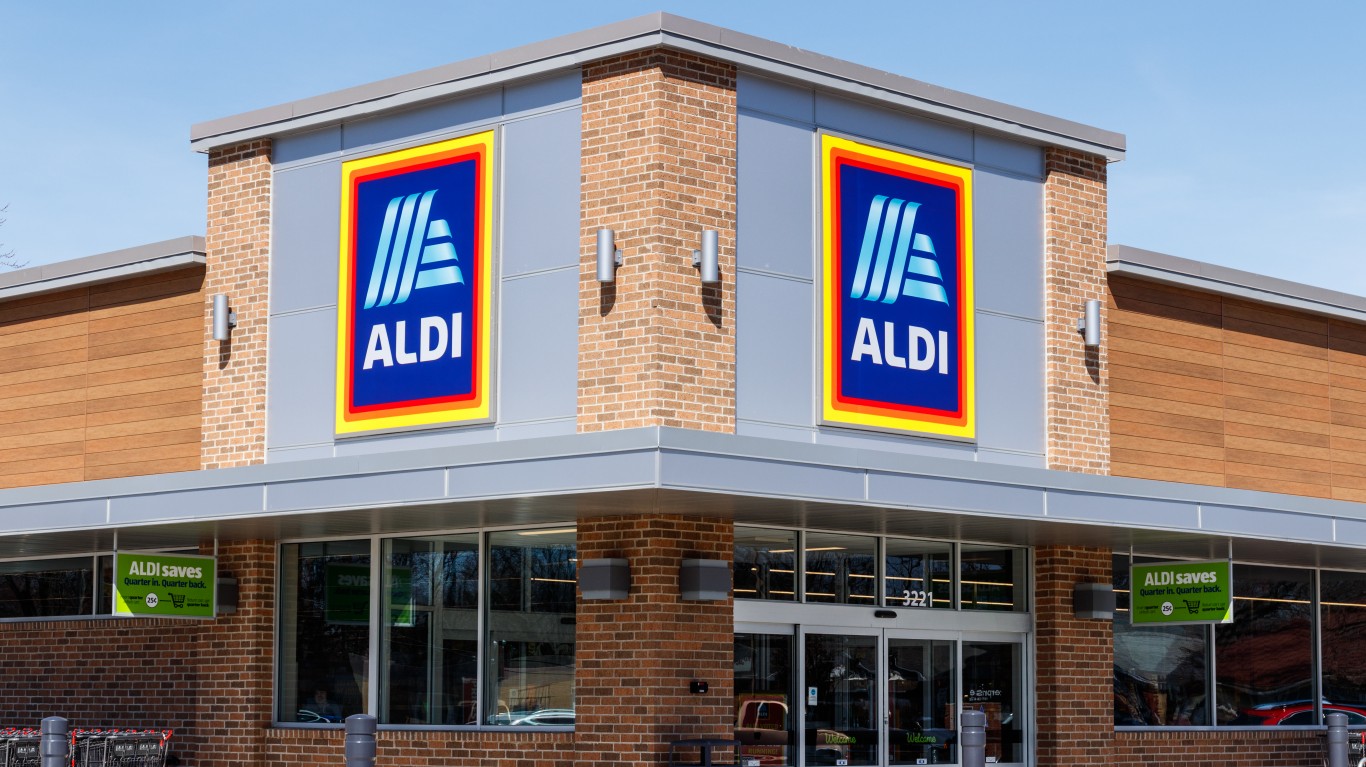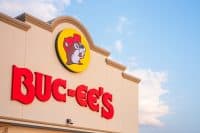
The soda industry has a problem. Some of the industry’s largest selling and most famous brands have lost well over a third of their sales in the last decade. When those brands include Sprite, Pepsi, and 7-Up, the erosion is worth hundreds of millions of dollars a year. 24/7 Wall St. examined the major soda brands to find which have been selling less and less.
Coca-Cola (NYSE: KO), PepsiCo (NYSE: PEP) and Dr Pepper Snapple (NYSE: DPS) dominate the soft drink market in the U.S. Together they accounted for about 85% of the branded soda sales in the country during 2010. Coca-Cola and PepsiCo have not only lost substantial sales of their largest brands, but their overall U.S. sales have dropped during the last ten years. Coca Cola’s sales across all of its soda brands in the U.S. as measured in gallons have fallen from 6.7 billion gallons in 2001 to 5.9 billion gallons last year. PepsiCo’s total gallon sales fell from 4.8 billion gallons to 4.1 billion gallons over the same period.
Industry experts say the struggles are not surprising as competition grew to include other drinks. The competition now includes bottled waters, sports drinks like Gatorade, energy drinks, and special water products that include vitamins and minerals. Popular brands like Fiji Water and Vitamin Water were not introduced into the U.S. until the late 1990s. The current versions of the popular Powerade sports drink were not available until 2001. These newer brands have had strong marketing support for years and are part of sophisticated distribution networks, making them formidable competitors to the traditional soda brands.
Each of the three large soft drink companies also creates new brands that aim to add new customers or keep current customers who want new products. This product development system created the diet and the caffeine free sodas in order to retain or capture those who wanted fewer calories or less caffeine.
The number of individual soda, water, and energy drink products that have significant sales has grown so much in the last decade that Coca Cola has four brands in the top ten sold in the U.S. that help it maintain a 22% market share. These include three versions of Coca Cola alone: Coke, Diet Coke, and Coke Zero. Coke Zero was not introduced until 2005, but it already has 1.3% of the entire U.S. soda market. By introducing new brands Coke managed to offset what would have been the much worse overall 12% drop in gallons sold between 2001 and 2010.
The soft drink business is almost unimaginably large. Coca-Cola’s global revenue was $12.3 billion in the third quarter of 2011 alone. Coke reported $5.4 billion in North American revenue. But growth was plodding. In the North American region, unit case volume rose only 5% compared to the same quarter in 2010.
PepsiCo’s soda revenue in the Americas were similar to Coca-Cola’s last quarter. Part of PepsiCo’s American operations make money because they distribute many of the Dr Pepper Snapple brands. Coca-Cola distributes some of the Dr Pepper Snapple brands as well. Dr Pepper Snapple, whose sales are dwarfed by those of the other two companies, benefits from the bottling, trucking, and stocking infrastructures created by the bigger firms. Dr Pepper Snapple’s total worldwide revenue for the last quarter was $1.5 billion.
The total gallons of each product sold by each company are measured by the brand’s name and brand owner, not by which company distributes it. 24/7 Wall St. examined the major brands sold by the three largest soda companies based on this method of measurement. Beverage World media company provided data on the number of gallons sold by each brand in 2001 and 2010. Gallons used in each analysis are in millions.
24/7’s analysis shows that some of the largest brands like Coke, Sprite, and 7 Up have been unable to maintain sales anywhere near what they were in 2001. This has caused two of the three major soda companies to lose large parts of their total gallon sales in the U.S.
This is 24/7 Wall St.’s Sodas America No Longer Drinks
1. Coca-Cola Classic
> Parent company: Coca-Cola
> Pct. change in gallons sold: -22%
> Gallons sold 2001: 3,044
> Gallons sold 2010: 2,386
Soon after it was first introduced by John Stith Pemberton in Atlanta in 1886, Coca-Cola became an American favorite. From 1899 until 1920 the number of bottlers grew from two to more than 1,000 nationwide. However, the last decade has seen the amount of Coca-Cola Classic consumed decrease significantly. Customers have turned to a number of similar alternatives to meet their specific preferences, including Diet Coke, Coke Zero, and Coca-Cola Cherry.
2. Pepsi-Cola
> Parent company: PepsiCo
> Pct. change in gallons sold: -32%
> Gallons sold 2001: 2,075
> Gallons sold 2010: 1,407
Pepsi was invented in 1898 by Caleb Bradham and has been a close competitor of Coke’s ever since. Parent company PepsiCo has diversified greatly in recent years. In 1998 it bought Tropicana, and in 2001 it bought Gatorade. Like Coca-Cola, PepsiCo also offers various modified versions of Pepsi, such as Diet and Caffeine-Free.
3. Sprite
> Parent company: Coca-Cola
> Pct. change in gallons sold: -20%
> Gallons sold 2001: 984.1
> Gallons sold 2010: 785.6
Sprite, although the market leader in the lemon soda category, has seen consumption drop greatly since 2001. Part of this decline is the result of PepsiCo’s Sierra Mist, which has gained popularity since its release in 2000. Coca-Cola attempted to revamp the brand in 2010 by releasing a new ad campaign and changing the “Obey Your Thirst” tagline to “The Spark.”
4. 7 UP
> Parent company: Dr Pepper Snapple Group
> Pct. change in gallons sold: -53%
> Gallons sold 2001: 283.8
> Gallons sold 2010: 131.4
7 Up has taken the greatest hit over the last decade. The number of gallons sold has dropped 53% since 2001. One of the reasons for this is the crowded lemon-lime soda market. Another reason is that 7 Up used to be largely distributed by Pepsi bottlers who replaced it with Sierra Mist, according to Ad Age.
5. Caffeine Free Diet Coke
> Parent company: Coca-Cola
> Pct. change in gallons sold: -37%
> Gallons sold 2001: 260.7
> Gallons sold 2010: 165.4
Caffeine Free Diet Coke has had the second greatest decrease in gallons sold since 2001. This is most likely the result of newer options. There are a number of relatively healthy caffeine-free beverages available, such as juices and bottled water. Coca-Cola also sells now caffeine free Coca-Cola Zero, an extremely similar product to Caffeine Free Diet Coke.
Douglas A. McIntyre
Thank you for reading! Have some feedback for us?
Contact the 24/7 Wall St. editorial team.


